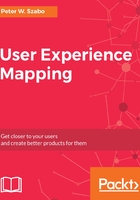
Pen and paper are all you need – but adding color makes the maps great
A piece of paper and a pen is all you really need for mapping. For our purpose, the only "drawing" you need to do is drawing lines. Sounds simple enough, right? We have all created millions of lines. When we connect those, shapes emerged. Writing is simply a set of lines, no matter the language. Alyona Nickelson goes beyond that and emphasizes that lines and shapes carry an emotional message to the viewer; straight lines convey a sense of accuracy, directness, solidity, and stiffness. On the other hand, curves create a feeling of compromise and agreement, and flexibility and indecisiveness. To balance our communication, we can incorporate both types of lines. Don't worry if you can't draw a straight line. You can use rulers, or better to avoid communicating stiffness and be 100% agile, use only freehand-drawn lines.
Any pen and paper will do, but if you had more than one color, that would be really helpful. The often neglected aspect of experience mapping is color. We use brightly colored sticky notes for our user story maps (see Chapter 2, User Story Map – Requirements by Collaboration and Sticky Notes), but many UX experts just pick colors to represent a group of notes or even worse, just randomly. I hope that after reading this book, you will have a different approach. Color is an important aspect of communication. Judy Martin argues that our response to color is instinctive. We use it as a means of recognition and analysis. It not only defines space and form, but we also use color cues as invitations or warning signals. It has a subconscious emotional appeal. We associate green with the idea of life, growth, youth, spring, hope, and recently, environmental consciousness. For the artists out there, that might be a shock, because there are few natural sources of green pigment and the green coloring agents in artists' materials have been chemically developed so make sure that no green pastel dust falls on your cat, or any pastel dust for that matter.

This is a fraction (the cleaner, more presentable fraction) of my drawing equipment, but don't let yourself be intimidated by that. You don't need such a wide range of equipment for User Experience Mapping. Simply use what is available to you. A piece of printer paper and a pen is a good start. Colored mud on the wall of a cave was the choice of our ancestors, and it worked wonderfully for their purposes. Remember Barber Barrington's famous quote: A keen artist will draw with anything and make it work to his advantage. All user experience experts are artists. Communication is an art after all.
Now, we really need to get started with drawing a map. I'm sure that the inner artist in you is itching to take a pencil in hand and draw something.